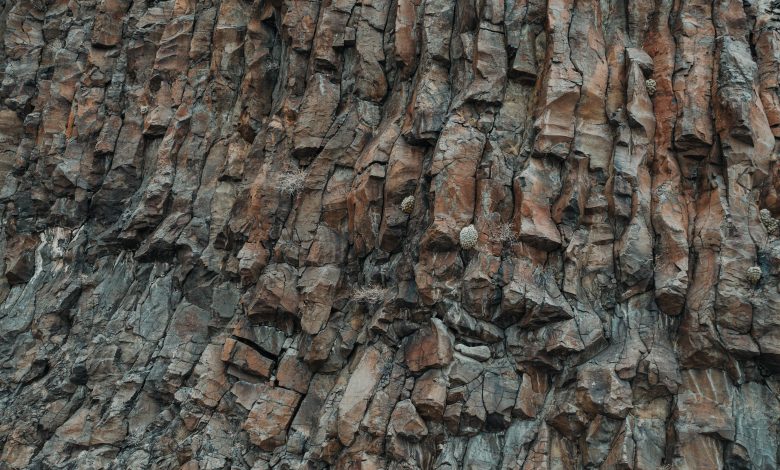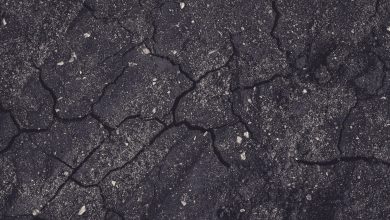
Natural stone is one of the most popular materials used in the construction of homes and gardens. In fact, if you stop to think about it, natural stone has had a vital role in modern civilization. From buildings people live and work to the ground they drive and walk on, it’s difficult to imagine life without natural stone.
But have you ever considered the journey that natural stone takes from the depths of the earth into homes, commercial buildings, and roads is quite a fascinating one? This post explores this journey, including how natural stone is formed and how it’s processed.
How Natural Stone is Formed
Natural stone was formed hundreds of thousands of years ago, by lava, minerals, and water. The type of stone created mainly depends on the type of minerals and lava that are combined and their location. Natural stone can be categorised into: Igneous, Metamorphic, and Sedimentary.
Igneous rock
Igneous rocks are usually formed when the magma or lava solidifies and cools down, either underneath the earth’s surface or when ejected from the surface in volcanoes and left to cool above the ground. The most common form of igneous stone is granite, though there are others like gabbro, basalt, rhyolite, and dunite.
Sedimentary rocks
Sedimentary rocks are formed through the combination of various rock fragments, along with the remains of animals, plants, and other organic materials. The materials accumulate in oceans, deserts, and lakes before being compressed into their final form by the sheer amount of weight of the earth above them. The most common forms of sedimentary rocks are limestone, dolomite, siltstone, and shale.
Metamorphic rocks
Metamorphic rocks are those that existed as sedimentary or igneous stones and were transformed due to pressure and heat applied through exposure to magma and extreme pressure from the weight of the earth above these rocks. Other physical factors that contribute to their formation include physical and chemical changes in their structure. The most famous forms of metamorphic rocks include marble, soapstone, quartzite, jade, and gneiss.
How Natural Stones Are Extracted
To become market-ready, natural stones require careful mining or excavation. The process of extracting these stones is often extensive and requires specialised machinery and quarry workers. Before the natural stone can be accessed, there’s a list of actions that need to happen.
Identification
First, a team of geologists will look for natural stone outcrops at a quarry. Next, a sample of the stone is taken and analysed to see if it has the desired characteristics for it to be usable as a building material. If the stone fits the bill, the next step is obtaining the necessary permits and licences from the local government. This could take anywhere from months to years.
Extraction site preparation
Once approval is granted, work officially commences. The first thing is often clearing out any dirt, debris, and other obstacles, which might otherwise impede the quarrying process. In most cases, the quarry will be located in inaccessible and/or remote areas, which may necessitate the building of a road or tunnel network before the real work can start.
Cutting
A combination of high-powered torches, diamond wire saws, and timed explosives is used to separate the stone from the face of the quarry. The resulting massive blocks are then cut into the size of stone blocks with diamond cutters. Heavy cranes are used to lift these large blocks and load them onto specialised vehicles for transport.
Transport
Heavy-duty trucks are used to carry the heavy size blocks from the mines to the processing factories or units. The transportation process is usually done via the road network or tunnels built for the same purpose during the preparation stage.
Fragmentation
Most of these large stone blocks will need further cutting to be made into commercially viable stone slab sizes. These can be custom or standard dimensions. The fragmentation process takes place in processing facilities with more sophisticated segregation and cutting tools.
The slabs are essentially cut into the correct size and polished to have the desired finish. In most cases, the last stage in the natural stone’s journey before it can be used in homes or buildings happens at a fabricator’s facility. The slabs are further cut into the specific requirements of each project, which may include shaping the edges into the specific details required for installation.
Final Thoughts
Now that you know how natural stone is made, and the journey it takes from deep inside the earth’s crust into your kitchen or bathroom, you can see why it’s worth the wait. Moreover, its appearance alone is often considered art, and you can do great things with it. You can learn more about natural stone from naturalstoneireland.ie.
No matter the kind of natural stone you choose, you can be sure that it can help you achieve incredible designs and beauty that will last for many years.



